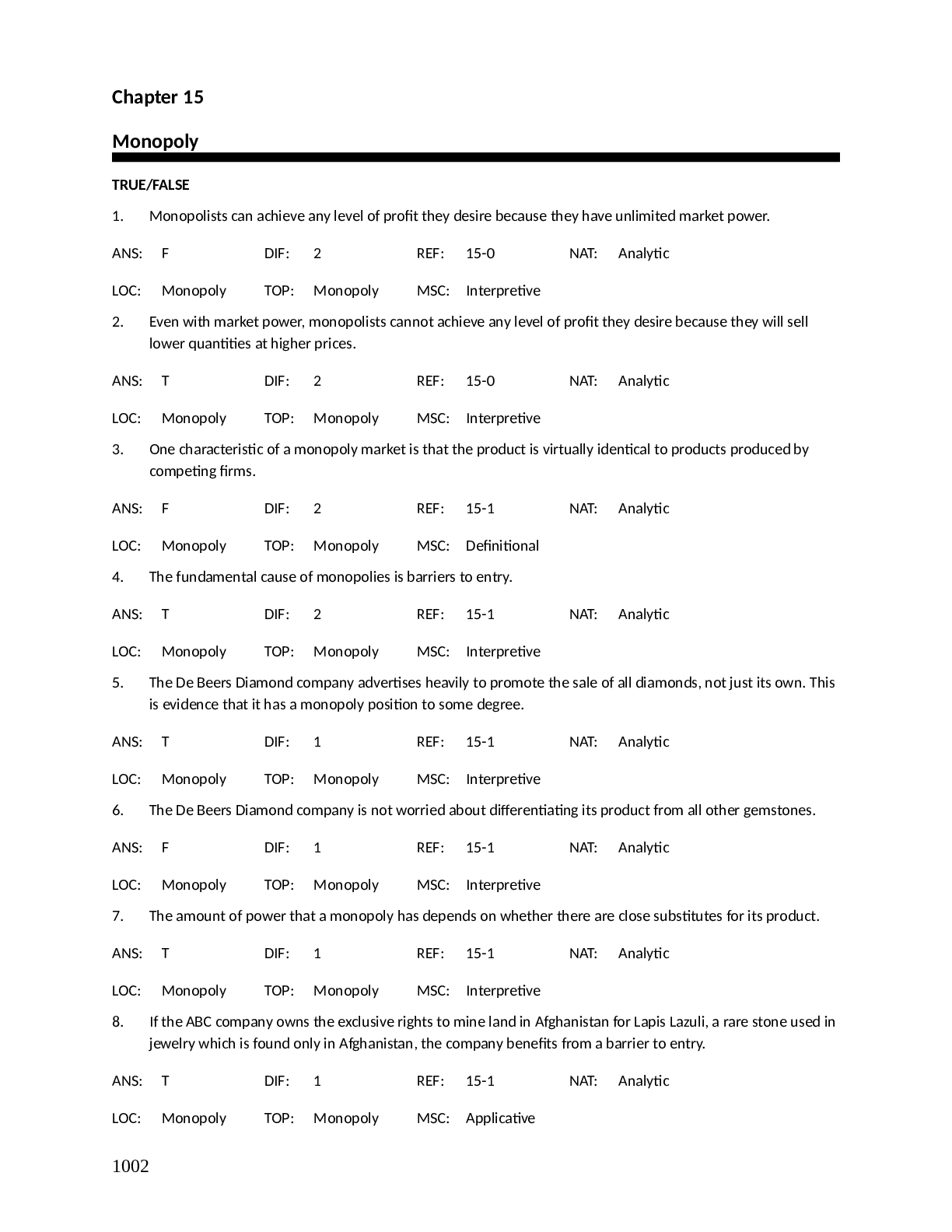Monopoly Chapter 15
Course
General Questions
Subject
Chemistry
Category
Study Guide
Pages
378
Uploaded By
ATIPROS
Preview 5 out of 378 Pages


Download all 378 pages for $ 19.50
Reviews (0)
$19.50
